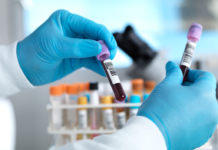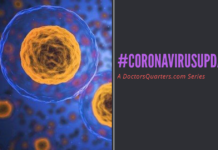To Buy Erythromycin Online Visit Our Pharmacy ↓

Understanding Erythromycin: a Brief Overview
Erythromycin, a reputable antibiotic, is prescribed to combat a range of bacterial infections. Derived from the bacterium Saccharopolyspora erythraea, this compound medication has been a staple in dermatology for decades. It's known for blocking protein synthesis in bacteria, thereby halting their growth. As a prescribed 'elixir', it’s formulated to address common skin afflictions, ensuring that bacterial invasions are tackled effectively.
Initially embraced as a broad-spectrum antibiotic, erythromycin's use has expanded over the years. Dermatologists rely on its efficacy, especially when prescribing it in a 'script' for conditions like acne, psoriasis, and certain bacterial infections. Its ability to work 'stat' against stubborn bacteria makes it particularly valuable in clinical settings, offering a reliable solution for both acute and chronic skin issues.
```html
| Erythromycin Key Facts | |
|---|---|
| Derived from | Saccharopolyspora erythraea |
| Primary Use | Bacterial infections in dermatology |
| Formulation | Compound medication, Elixir |
How Erythromycin Works Against Skin Infections

Erythromycin, a potent antibiotic, operates by inhibiting bacterial protein synthesis, which is essential for bacterial growth and replication. It targets a specific part of the bacterial cell known as the ribosome, effectively preventing the bacteria from producing proteins vital to their survival. This action makes erythromycin particularly effective against various bacteria responsible for skin infections. In essence, when prescribed as a script, this compound medication acts as a targeted missile, honing in on bacteria causing conditions like acne and impetigo.
However, timing is crucial. Administered at the appropriate moment, often recorded as "stat" in urgent scenarios, its rapid action can stop the spread and worsening of skin infections. While erythromycin fights off bacterial invaders, it's crucial to adhere to the sig provided to maximize its therapeutic benefits. This ensures the medication is optimized to clear infections while minimizing potential side effects.
Key Benefits of Erythromycin in Dermatology
In dermatology, erythromycin serves as a powerful ally by effectively targeting strains of bacteria responsible for skin infections. This antibiotic is often considered when a comp approach is needed to manage dermatological conditions, such as acne or rosacea, providing an avenue for relief where other medications might not suffice. Its ability to reduce inflammation is a stat improvement noticed in many patients.
Not only does erythromycin help curb bacterial growth, but it also minimizes the risk of resistance development, promoting long-term skin health. As part of a comprehensive dermatological treatment, understanding the sig and adhering to prescribed protocols ensures maximal benefits while minimizing potential hangover effects.
Common Skin Infections Treated with Erythromycin

Treating acne is one of the most common uses of erythromycin. This antibiotic is often scripted to target Propionibacterium acnes, reducing inflammation and bacterial growth. Another prevalent skin condition treated with this medication is rosacea, where its anti-inflammatory properties help mitigate redness and swelling. Erythromycin is also effective against impetigo, a bacterial skin infection that causes sores, particularly in children. Applied as a topical elixir, erythromycin disrupts bacterial protein synthesis, making it a reliable option for various dermatological issues.
Potential Side Effects and Considerations
Though erythromycin is a valuable asset in dermatology, it's crucial to be aware of its potential side effects. Common reactions include gastrointestinal upset and liver function abnormalities. Occasionally, more rare responses such as allergic reactions or skin rash may occur. Adherence to the script is essential, avoiding the "Pill Mill" mentality of seeking unnecessary prescriptions.
It's vital to follow the sig meticulously to minimize risks. Patients should immediately report severe side effects to their healthcare provider to ensure safety.
| Considerations | Details |
|---|---|
| Common Side Effects | Gastrointestinal issues, liver function changes |
| Allergic Reactions | Skin rash, hypersensitivity responses |
Future of Erythromycin in Skin Infection Treatment
As we look to the future of erythromycin in dermatological applications, innovation is key. Researchers are exploring different compounds, aiming to enhance efficacy and reduce the side effect profile. The integration of novel delivery systems could transform this once-everyday script into a more user-friendly elixir, minimizing resistance. Erythromycin’s journey is far from over, with scientists continuously seeking methods to turbocharge its impact against resistant strains.
Emerging trends also include combining erythromycin with other medications, creating a pharmaceutical cocktail that might offer broader-spectrum action against stubborn skin conditions. Such combinations could stat address the tough-to-treat infections that plague many patients today.
Advancements in genetic and molecular research further promise a tailored approach, potentially developing personalized scripts for the individual. The evolving landscape of dermatology paints an optimistic picture for erythromycin, ensuring it remains a stalwart in skin infection treatment for years to come.






























